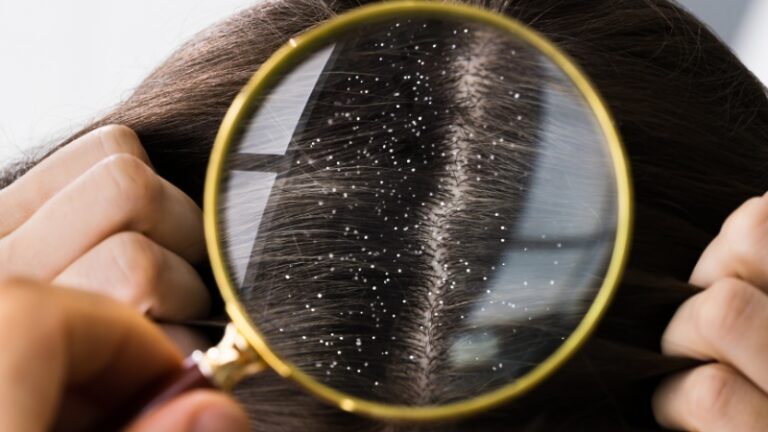Malassezia is a naturally occurring yeast on the skin, but when it overgrows, it can trigger stubborn skin conditions like dandruff, fungal acne, and seborrheic dermatitis.
While conventional treatments often rely on antifungal medications, many natural oils, herbs, and lifestyle changes have been shown to effectively control and reduce Malassezia overgrowth, without harsh chemicals.
Why It Overgrows
Malassezia yeast is part of your skin’s microbiome. It usually exists in harmony with your body, but certain triggers can cause it to flourish excessively, leading to conditions like:
What causes Malassezia to overgrow?
Natural Oils That Kill or Inhibit Malassezia
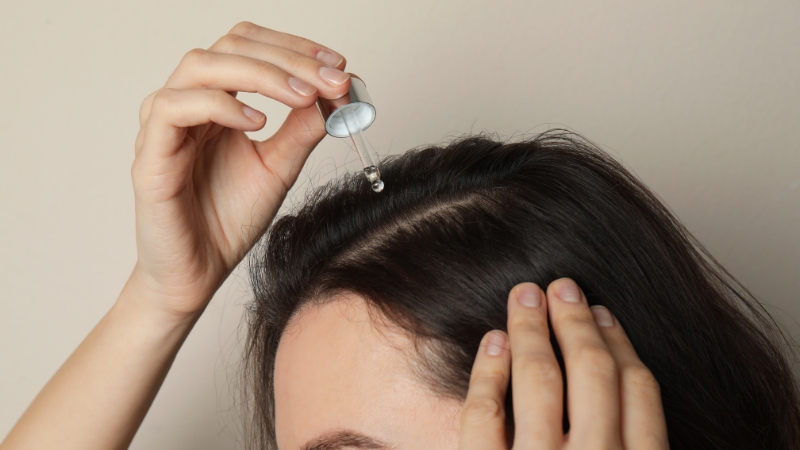
1. MCT Oil (Caprylic/Capric Triglycerides)
MCT oil is one of the most effective and accessible oils for people dealing with Malassezia-related skin conditions.
It’s composed of medium-chain triglycerides, primarily caprylic (C8) and capric (C10) fatty acids, which Malassezia yeast is unable to metabolize.
This makes MCT oil a rare exception among skincare oils — it hydrates the skin without feeding the yeast.
Many commonly used plant oils, like jojoba, almond, and coconut oil, contain long-chain fatty acids that nourish and fuel Malassezia growth. But MCT oil effectively starves the yeast by denying it the lipid chains it needs.
It’s lightweight, non-greasy, and well-tolerated by most skin types. Applied regularly, it can help moisturize, soothe inflammation, and create a protective barrier — all without worsening fungal acne or dermatitis.
Property
Details
Chain Length
Medium (C8–C10)
Comedogenic Rating
Low
Antifungal Support
Starves Malassezia by offering unusable lipids
How to Use
Apply topically on clean skin 1–2x daily
Best For
Moisturizing without feeding yeast
2. Squalane (NOT Squalene)
View this post on Instagram
Squalane is a skin-loving oil that is particularly suitable for fungal-prone and sensitive skin types. It’s a hydrogenated version of squalene — a natural component of human sebum — but unlike squalene, it is fully saturated and stable, making it inert to fungal growth.
Malassezia cannot feed on squalane, which makes it a safe choice for people dealing with fungal acne or seborrheic dermatitis.
Lightweight, fast-absorbing, and non-comedogenic, squalane is ideal for maintaining a healthy moisture barrier without clogging pores or disrupting the skin’s microbiome.
Its similarity to the skin’s natural lipids helps with hydration and repair, and it’s especially useful for individuals whose skin becomes dry and irritated from antifungal treatments.
Property
Details
Source
Usually derived from olives or sugarcane
Fungal-Safe?
Yes
Benefits
Non-irritating, hydrates, and protects skin
How to Use
Apply as a serum or lightweight moisturizer
Best For
Sensitive, acne-prone, or dry skin
3. Mineral Oil
Although it often carries a bad reputation due to its petroleum origin, mineral oil is actually a highly refined and purified substance that is non-comedogenic and fungal-safe.
Malassezia yeast cannot digest hydrocarbons, which means mineral oil offers moisture without contributing to yeast overgrowth.
Mineral oil forms a protective barrier on the skin, locking in hydration and helping to repair a damaged moisture barrier. This can be especially helpful if the skin is irritated, flaky, or compromised from harsh treatments.
However, because it’s occlusive, it should only be used on clean skin to avoid trapping dirt or sweat that could exacerbate irritation or inflammation.
Property
Details
Fungal Activity
Inert – does not feed yeast
Use Cases
Barrier repair, makeup removal
Caution
Occlusive – apply only on freshly cleansed skin
Best For
Severely dry, irritated, or stripped skin
Herbs and Natural Antifungals
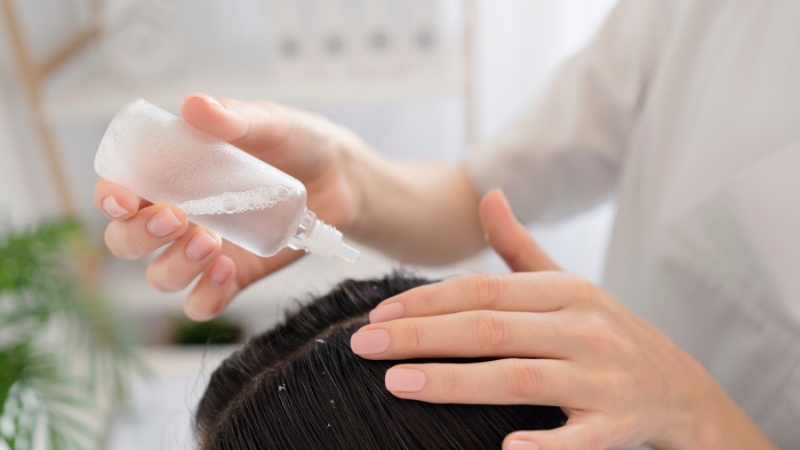
1. Tea Tree Oil
Tea tree oil is one of the most widely researched essential oils for its broad-spectrum antifungal properties.
It contains active compounds such as terpinen-4-ol, which have been shown in multiple studies to be effective against various yeasts and fungi, including Malassezia species in some cases.
It works by disrupting the cell membrane of the fungus, inhibiting growth and causing cell death.
Due to its strength, tea tree oil should never be used undiluted on the skin. A safe concentration is around 1–2%, diluted in a fungal-safe carrier oil (like MCT or squalane).
It can be particularly effective as a spot treatment for fungal acne or as an ingredient in anti-dandruff shampoos. However, sensitive skin types should patch-test first, as tea tree oil can cause irritation or allergic reactions in some individuals.
Property
Details
Active Compounds
Terpinen-4-ol, α-terpineol
Application
Dilute to 1–2% in a safe carrier oil
Studies
Proven antifungal activity across several species
Best For
Scalp issues, fungal acne, and localized inflammation
Warning
Can irritate skin if not properly diluted
2. Neem Extract
@harmonyfarmsnc Replying to @Cal 🌿 Say Goodbye to Fungal Acne with Neem! 🌿 🌼 Neem’s potent antibacterial properties can help clear up those stubborn breakouts. It’s like a soothing balm for your skin, working wonders to restore your natural radiance. ✨ 🍃 But that’s not all! Neem’s antifungal abilities make it a game-changer for tackling fungal acne. Say hello to a clearer complexion! 🍃 🌟 Embrace the power of nature’s remedy. Incorporate neem into your skincare routine and let it work its magic on your skin. 🌟 #fungalacne #neem #holistichealth #supplements #harmonyfarmsnc ♬ Peace – Official Sound Studio
Neem has been a staple in traditional Ayurvedic medicine for centuries. It has strong antifungal, antibacterial, and anti-inflammatory properties, making it a powerful tool in natural skincare.
The active components of neem — including azadirachtin and nimbidin — have shown effectiveness against a variety of fungal strains.
While not as heavily studied on Malassezia specifically, neem is often used in natural dandruff shampoos, antifungal creams, and herbal treatments for seborrheic dermatitis. Its ability to calm inflammation and reduce itching also makes it a great choice for irritated, flaky skin, especially on the scalp or body folds.
It’s typically used in oil form, masks, or diluted topical applications.
Property
Details
Active Compounds
Azadirachtin, nimbidin
Uses
In masks, shampoos, or blended with other herbs
Best For
Scalp health, inflammation, dermatitis
Other Benefits
Also antibacterial and soothing to the skin
3. Oregano Oil (Carvacrol)
Oregano oil is one of the most potent natural antifungals, thanks to its high content of carvacrol, a compound that breaks down fungal cell walls and inhibits replication.
While most studies focus on its effectiveness against Candida and other common fungi, its mechanism of action shows promise for Malassezia management as well.
That said, oregano oil is extremely strong and can easily burn or irritate the skin if used improperly.
It should always be heavily diluted (typically less than 1% concentration) and ideally used in controlled spot treatments or capsules.
Even then, it’s best suited as a short-term antifungal intervention, not as a daily-use product.
Property
Details
Strength
Very strong – use with extreme dilution
Best Used As
Supplement (capsule) or highly diluted topical
Risks
Skin burns, irritation if undiluted
Fungal Relevance
Strong effect on Candida, possible Malassezia control
Part 3: Lifestyle Changes That Help Eliminate Malassezia Overgrowth
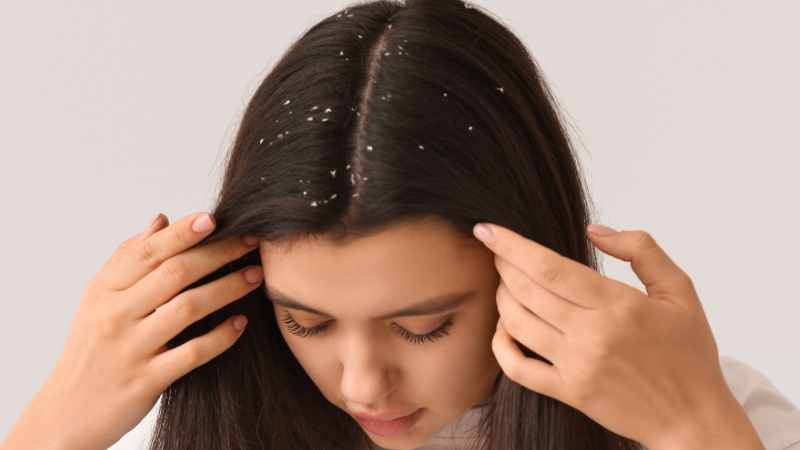
Fighting Malassezia isn’t just about what you put on your skin — it’s also about what’s happening inside your body and your environment.
Here are lifestyle changes that support a healthy skin microbiome.
1. Clean Up Your Skincare Products
Many moisturizers, sunscreens, and makeup products are full of ingredients that feed Malassezia — particularly esters, polysorbates, and fatty acids.
Switch to:
- Fungal-acne-safe moisturizers
- Minimalist ingredient products
- Gel-based cleansers
- Non-oily sunscreens (zinc-based or silica)
Common Triggers
Safer Alternatives
Esters (Isopropyl Palmitate)
MCT oil, squalane
Polysorbates
Glycerin, hyaluronic acid
Fermented extracts
Avoid completely
2. Watch Your Diet (Especially Sugar & Dairy)
Eliminate sugar/dairy from your diet to see if that makes a difference in your skin. For many, their faces start clearing up immediately.
— AcneSkinSite (@AcneSkinSite) November 28, 2014
Though Malassezia lives on the skin, its behavior can be influenced by internal factors, especially inflammation and excess sebum production, which are affected by diet.
Avoid or reduce:
Increase:
- Omega-3s (flaxseed, fish oil)
- Antioxidants (berries, leafy greens)
- Zinc and selenium (pumpkin seeds, Brazil nuts)
Dietary Factor
Skin Impact
High sugar intake
Increases oil production and inflammation
Dairy
Linked to hormonal imbalance in acne
Omega-3s
Anti-inflammatory, skin barrier support
3. Control Heat & Humidity

If you’re living in a humid climate or sweating frequently, you may be inadvertently feeding the yeast.
Tips:
- Wear breathable fabrics
- Use an antifungal body wash after workouts
- Use air conditioning or dehumidifiers in closed spaces
- Don’t sleep in sweaty clothes or unwashed pillowcases
Scientific Studies & Research
While direct research on natural treatments for Malassezia is limited, some studies point to promising directions:
Medium-Chain Fatty Acids (MCT Oil)
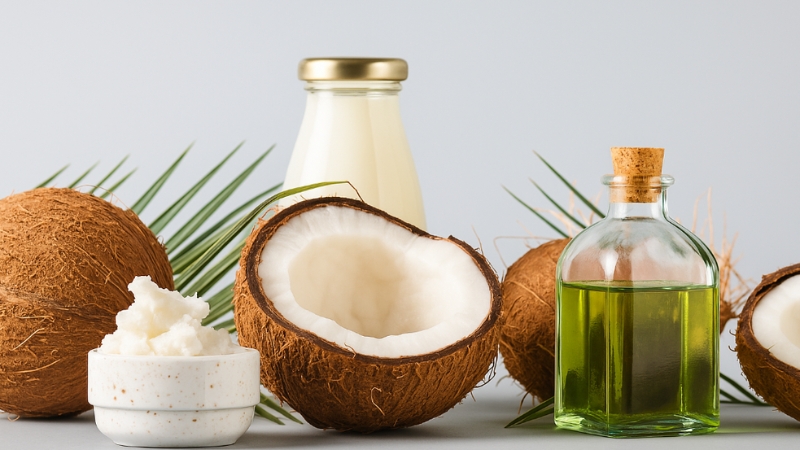
A study published in the Journal of Medical Microbiology (2016) investigated how various lipid sources influenced the growth of Malassezia furfur, one of the most commonly implicated species in human skin conditions.
The researchers found that medium-chain fatty acids (MCFAs) — such as caprylic (C8) and capric acid (C10) — did not support the growth of Malassezia. This was in contrast to long-chain fatty acids, which did promote growth.
This study supports the use of MCT oil as a safe emollient for fungal-prone skin. Since Malassezia is lipophilic (fat-loving) but cannot metabolize MCFAs, applying MCT oil may help moisturize the skin without fueling the yeast, making it one of the safest oils for people dealing with fungal acne or seborrheic dermatitis.
Tea Tree Oil and Terpinen-4-ol
Tea tree oil has been widely studied for its antimicrobial and antifungal properties. A 2006 review published in Clinical Microbiology Reviews examined the efficacy of terpinen-4-ol, the primary active compound in tea tree oil.
The review concluded that terpinen-4-ol exhibited broad-spectrum antifungal activity, particularly against dermatophytes and yeast strains such as Candida albicans and Malassezia species.
In vitro experiments have shown that tea tree oil disrupts the fungal cell membrane, leading to leakage of intracellular contents and eventual cell death.
Although tea tree oil’s efficacy may vary depending on the concentration and the fungal strain, its demonstrated antifungal action supports its use as a topical adjunct in treating fungal conditions. When diluted properly, tea tree oil may help reduce Malassezia populations on the skin, particularly for scalp and follicular applications.
Neem Extract (Azadirachta indica)
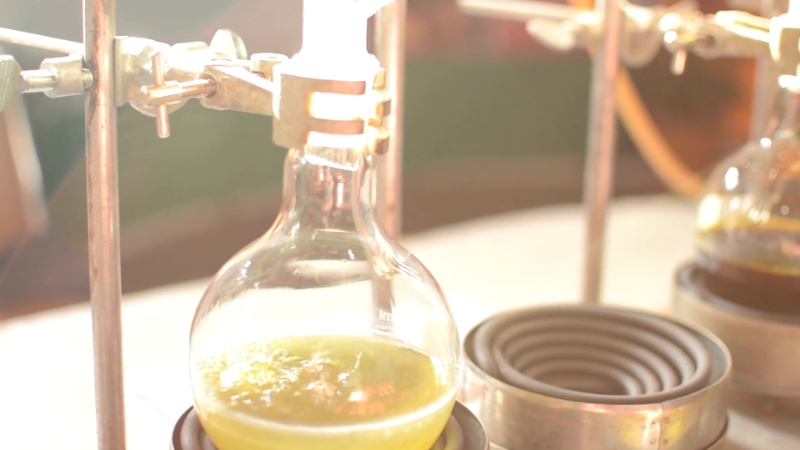
Neem is another botanically derived agent with strong antifungal, antibacterial, and anti-inflammatory properties.
In several studies, compounds in neem, such as azadirachtin, nimbin, and nimbidin, have shown broad-spectrum antifungal effects, especially against Candida, Trichophyton, and Microsporum species.
While Malassezia-specific studies on neem are still limited, its general antifungal efficacy makes it a promising natural intervention.
Neem is widely used in traditional Ayurvedic and herbal medicine for treating scalp infections and inflammatory skin conditions.
Its antifungal effects, combined with its soothing and antimicrobial properties, make it especially suitable for seborrheic dermatitis and scalp-based fungal symptoms.
Final Thoughts: Can You Kill Malassezia Naturally?
Yes — Malassezia can be managed and reduced naturally, but it requires a multi-pronged approach. You must:
- Avoid ingredients and foods that feed it
- Use topical treatments that starve or inhibit it
- Support your skin and body holistically
It’s about balance, not total eradication. Malassezia lives on everyone’s skin. Your goal is to restore a healthy relationship, not wage chemical warfare.
Take it slow, patch test everything, and listen to your skin. Natural remedies can be powerful, but consistency, simplicity, and understanding your triggers are key to lasting relief.

